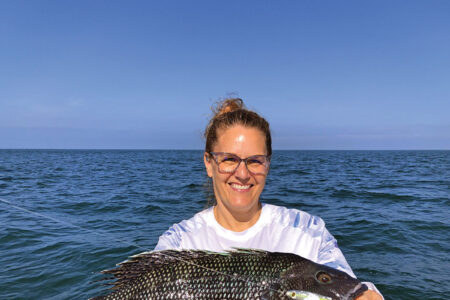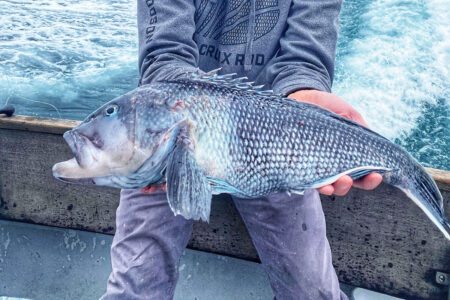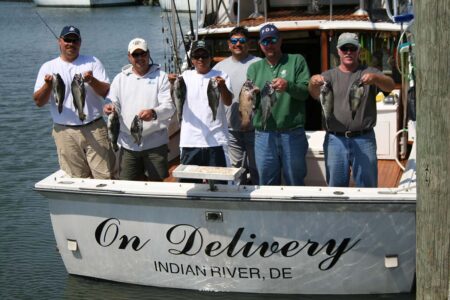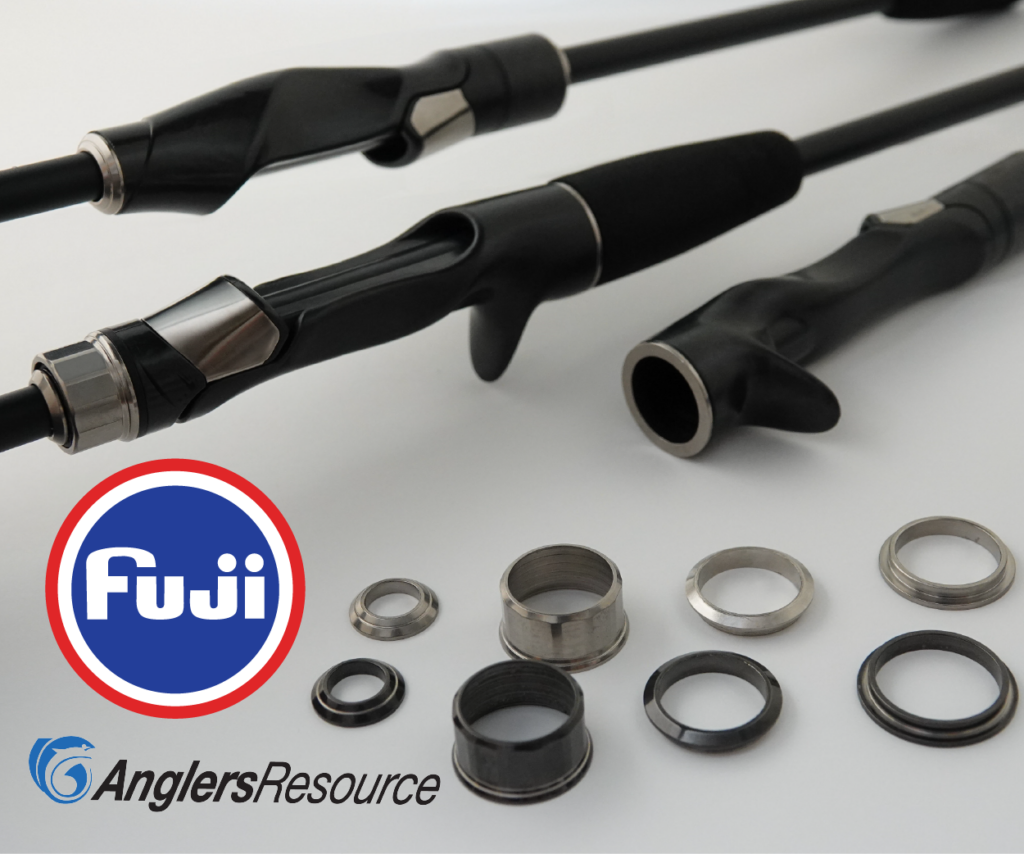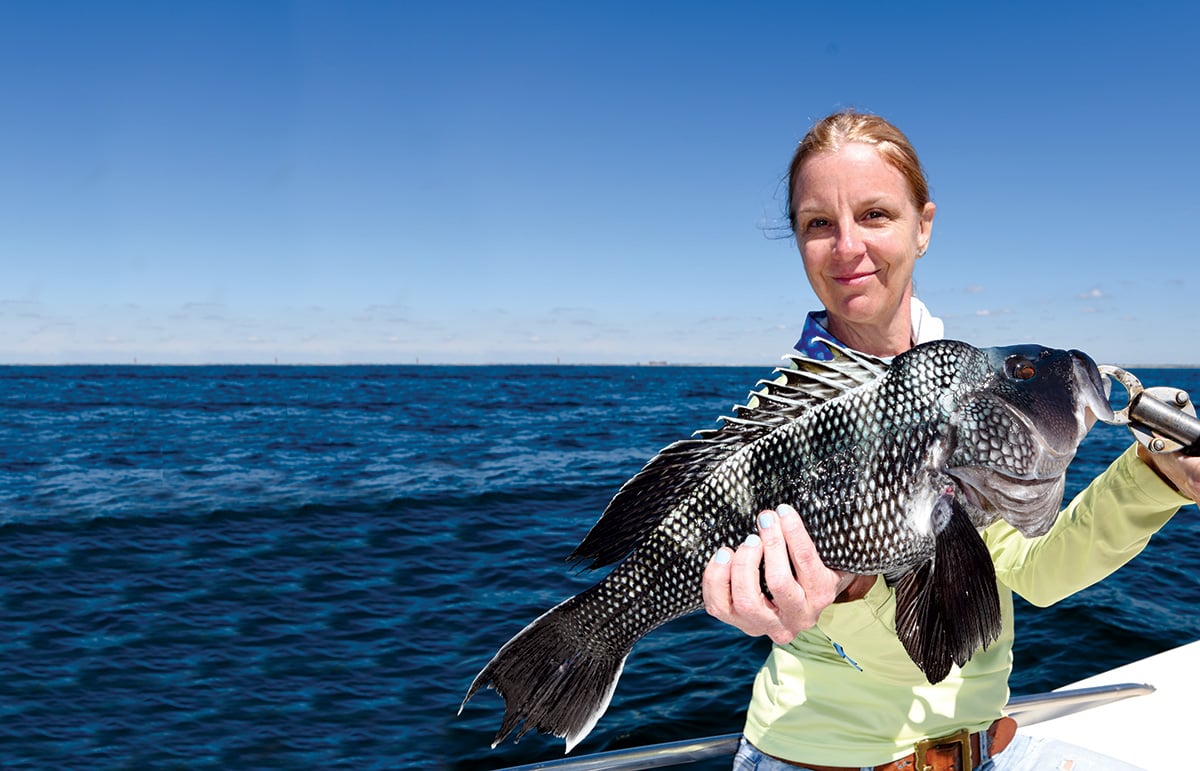
It may require work finding open seasons, but it’s all play – big play – once you do.
Anyone dropping lines along the Northeast and Mid-Atlantic coast knows there certainly doesn’t seem to be any shortage of the black sea bass. In fact, by all accounts the action has been phenomenal throughout the range; folks can’t get away from the sea bass when the restrictions are in place, and when the season opens it’s generally lights out fishing to fill the cooler.
As we enter September, there will be a transition from summer tactics into fall tactics on the sea biscuits, which means switching up target areas and upping your game to find and follow larger model fish.
Get on ‘em
Shifting gears from sweltering summer days into the cool breezes of autumn, black sea bass also start to make their push outward toward the continental shelf. It’s not an overnight happening of course, as sea bass slowly and surely start colonizing wrecks, reefs and rockpiles throughout the fall on the midshore grounds until they reach their wintering grounds on the continental shelf. At the present moment, pick your spots anywhere from 3 to 40 miles off the beaches to find them.
For a gauge, along much of the Mid-Atlantic waters in September and October the fish could be 10 to 30 miles off in 100 to 150 feet of water, and by November the humpbacks are in the 40- to 50-mile range, roughly 150 to 200 feet of water and by late December into January, look for the 70- to 80-mile wrecks in water 200 to 300 feet. Once up into New England, most of the “offshore” action late in the season before the January federal closure is just past Block Island out 12 miles off the Rhode Island coast. Depth-wise it is much shallower too; the anglers there target 150 feet or less.
Generally speaking though, same size sea bass school together, so if you are catching dinks at one spot, you may want to shift or make a move to find pods of greater sized fish. While drifting may be the main tactic for sea bass in shallower water, from fall into winter anchoring on specific pieces of structure is the key to success in deeper waters. When setting up on a piece, you may want to initially drift over with baits and jigs to see if anybody’s home, then make your commitment depending on the results.
When anchoring up, make little shifts on a piece to explore the different nooks and crannies of an area; you may think you picked over the spot when you stop catching, but you just may need to shift around. Now that you’ve found the fish, it’s time to haul ‘em in.
Best Bassin’ Baits
Want to fill that cooler with sea biscuits? Without a doubt, baitfishing puts them there. Sea bass are eager to jump on any fresh baits sent to the bottom, but there are some specifics to pay attention to when choosing baits and dropping down. Common offerings include the number one bait – fresh clams – but other traditional baits include squid strips, green crabs, spearing, sand eels and white legger crabs. Non-traditional baits also include sea scallops, bergall strips, fresh conch and hermit crabs. Hands down, fresh clam out-fishes anything; but when you get into conch and crab baits, doubleheader and tripleheader catches are common as the fish can’t seem to pass those delicious baits by.
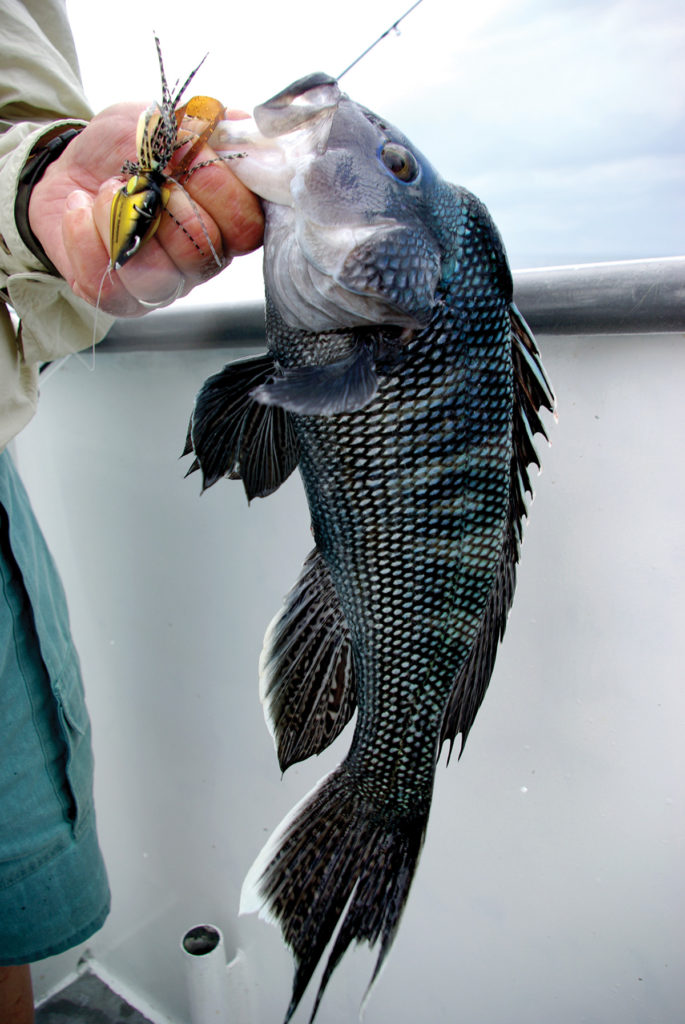
I’m looking to maximize every drop on the sea bass grounds and this, my personal favorite bait rig consists of a three-hook dropper starting with a 100-pound Spro barrel swivel, then a 50-inch section of 40-pound Seaguar fluorocarbon leader, to which three dropper loops are tied 16 inches apart, then an overhand loop on the tag end to hang on a bank sinker from 8 to 16 ounces. Each dropper loop has a 3/0 Gamaktasu octopus hook, or a size 3/0 Mustad #92641 baitholder hook. Before the hook is lanced on, two to three red or green plastic beads are slid on to rest behind the hook, and the hook can also be draped with a squid skirt or 3- to 5-inch red or chartreuse curly tail grub or Berkeley Gulp! swimmin’ mullet.
The more hooks down there, the more fish will hang themselves, but the key is to weed through the small ones. If you get one bite and feel a smaller fish, leave it down there and keep twitching the baits, two or three more will hang on it, most likely a large sea bass in that mix as the humpbacks want to come investigate what’s happening.
Jiggin’ Humpbacks
Flashy jigs definitely get the attention of large knuckleheads. A simple jigging rig consists of a 50-inch section of 40-pound Seaguar fluorocarbon leader, to which a Palomar knot fixes on an 8- to 12-ounce hammered diamond jig, Ava 67 to 87 jig with green or red tails, Crippled Herring jig, or Williamson Benthos jig. A teaser is tied roughly 36 inches up and can take the form of a large 6-inch grub tail, a squid skirt and 3/0 baitholder hook, 4- to 6-inch Fin-S fish or Zoom Super Fluke rubber bait, or even strips of bergall or squid lanced once through the tip of the meat. Besides metals, you can also opt to bounce around with 2- to 5-ounce Spro bucktail jigs or even Shimano Lucanus jigs. Tip bucktails with strips of squid or lance on a sand eel through the eyes for added attraction.
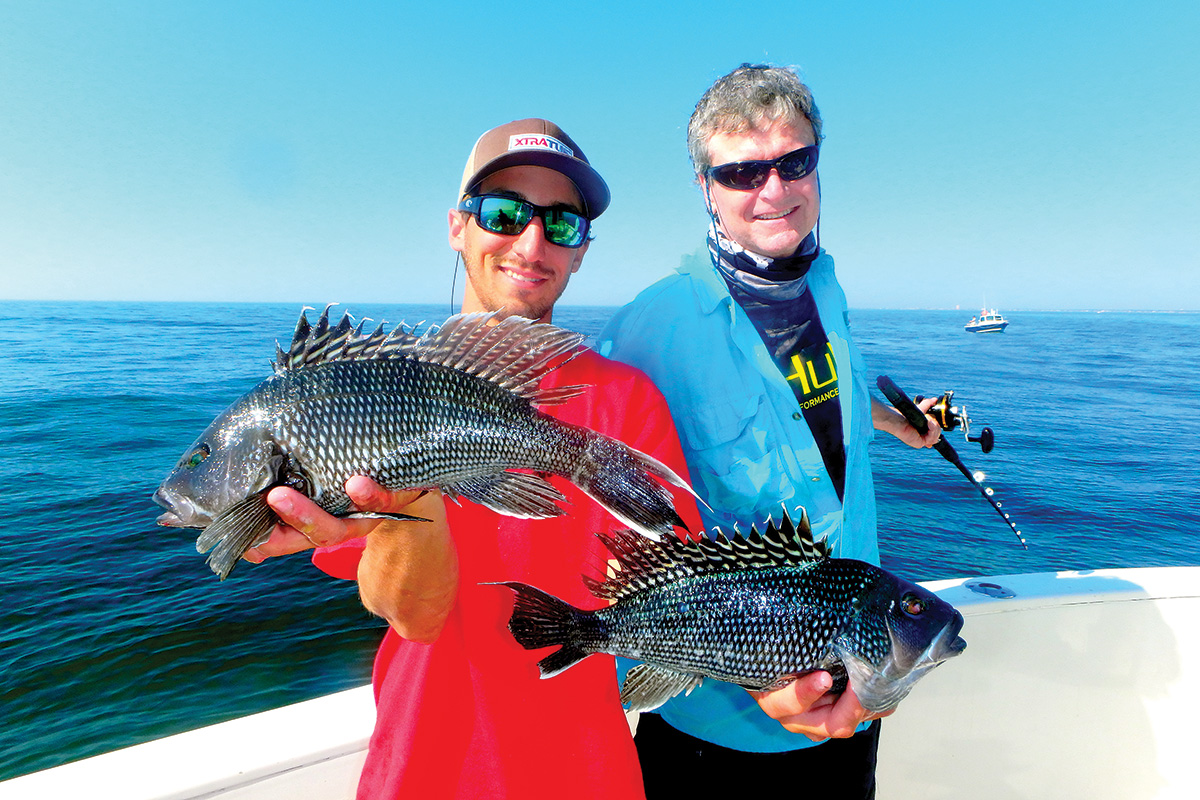
Slow and low is the key to jigging success as the aggressive nature of sea bass want to hit a crippled baitfish twitching and fluttering on or near the sea floor. Drop the jig to the bottom, and slowly pick up the rod a foot and drop it down again so the jig slams back into the sea floor. You want to almost vibrate and tap-bounce the jig on the bottom, creating some noise and commotion. Keep it tight. Sea bass like their presentations frantic but contained, not long and fluttery. Guys that swoop and sweep the jig won’t catch as many as those going slow and low. If that isn’t getting a bite going, another common technique is to drop a jig to the bottom and simply reel up slowly about 10 feet then drop back down, bouncing it slightly off the bottom, then repeat.
For a tactical approach, understand what the fishfinder is telling you. Read the fish as they appear like stacked pyramids on the fishfinder screen and plumb the water column accordingly. You may not need to be on the bottom when baitfishing or jigging, but can even be 30 feet off the sea floor simply holding the dropper rigs in place or waving the jig slowly in the water column without even being near the ocean floor. When sea bass are feeding high, the jig can still work wonders.
There are few fisheries quite as exciting and productive as black sea bass as a day out dropping for biscuits can be fast and furious. When the limits are sane, anglers can fill the cooler quite easily. On a good day out, an angler can fight sea bass into the hundreds.
Bang away at the biscuits on bait, then try to switch up and try the jig for a different approach to landing knuckleheads up to 7 pounds and greater. For you subscribers to The Fisherman, sea bass is the October Fish of the Month in the Dream Boat Fishing Challenge – it’s never too early to start planning for fall humpbacks!
| SETTING UP KNUCKLEHEAD GEAR |
|---|
|
When you think about it, sea bass rods need have enough backbone to reel in fish up to 6 pounds, three at a time, yet still be sensitive enough to feel the hits in waters over 200 feet. Generally, a 7-foot rod rated for 20- to 50-pound line, medium to heavy with a moderate action works well such as a Lamiglas 7040CT. Reels need high capacity spools to carry enough line to drop into 300-foot depths, and hi-speed retrieve to get those fish off the bottom and to the surface in quick time. Personally, I use a Shimano Talica 16 or Torium 20. Spool up with 50-pound Power Pro braided running line, and via Albright knot or uni-to-uni knot, tie on a 10-foot section of 40- to 50-pound Triplefish monofilament leader. The long leader prevents abrasion cuts from sharp wrecks that would normally slice through braided line, so the buffer is welcomed when fishing deepwater structure, plus it doesn’t sacrifice the sensitivity of the main braided running line. – Nick Honachefsky |
